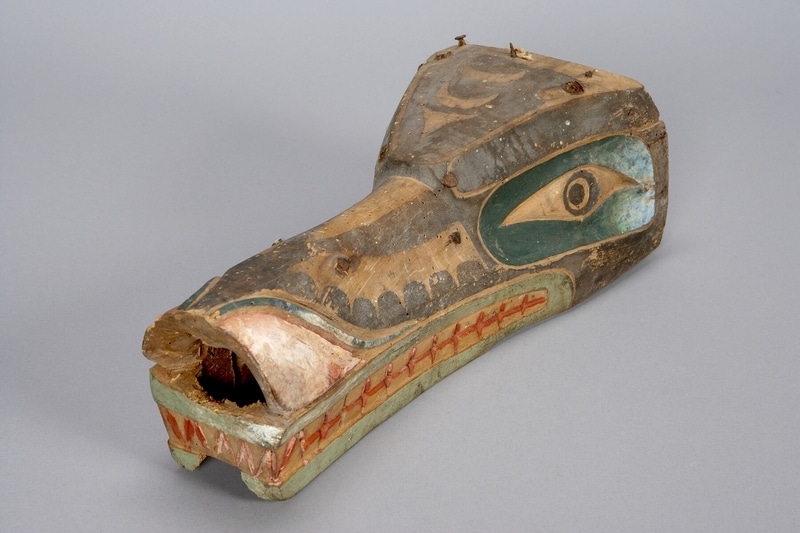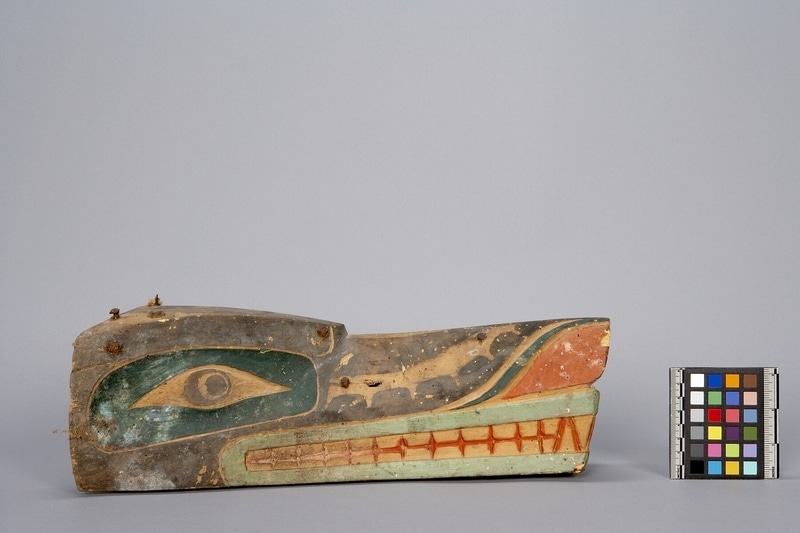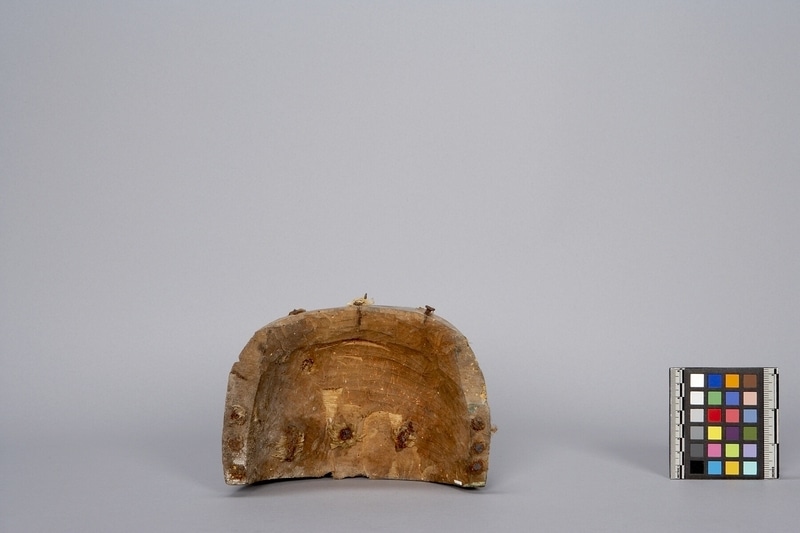Headdress Item Number: Nb3.1343 from the MOA: University of British Columbia



Description
Wooden wolf headdress, or mask, consisting of one cedar piece hollowed out; skull area is concave hollow. Large brow area tapers into elongated muzzle, nose angled upward and outward. The mouth has its all teeth, marked off by orange grooves and light green lips. Large dark green ovoids around eyes. Orange nose bordered by green, incised grooves separate fields. Rest of mask in black form line. Cloth bits and fibre near nail heads, most on top of head. The mask is painted black, green, red and blue with Northwest Coast stylized designs.
History Of Use
Masks of this type worn on forehead in the Walasaxa'akw ritual, a group dance in which wolf masks and blankets were worn. Wolf appeared as ancestral myth figure. Similar dance is dlugwala, 'having supernatural power'. From back hung either a cloth or fur drape, sometimes an entire wolf skin or cedar bark. Fibre remnants apparent on this one. Mask attached to head by either framework helmet made of twigs, or, for long muzzles, a stick brace at back that anchored across chest or waist.
Cultural Context
ceremonial
Iconographic Meaning
Long muzzle with upturned, angled nose, prominent pointed incisors as part of bared teeth, and ears, now missing, identify animal as a wolf, the expert hunter. Always expressions of intensity in masks. Xisiwe' means 'teeth on the forehead'.
Myths tell of the Village of the Warrior Wolves.
Narrative
Wastell said he collected the belongings in this donation in Telegraph Cove in the 1920s.
Item History
- Made in British Columbia, Canada before 1930
- Collected in Telegraph Cove, British Columbia, Canada during 1925
- Owned by Fred Wastell before February 7, 1983
- Received from Fred Wastell (Donor) on February 7, 1983
What
Who
- Culture
- Kwakwaka'wakw
- Previous Owner
- Fred Wastell
- Received from
- Fred Wastell (Donor)
Where
- Holding Institution
- MOA: University of British Columbia
- Made in
- British Columbia, Canada
- Collected in
- Telegraph Cove, British Columbia, Canada
When
- Creation Date
- before 1930
- Collection Date
- during 1925
- Ownership Date
- before February 7, 1983
- Acquisition Date
- on February 7, 1983
Other
- Condition
- fair
- Accession Number
- 0851/0001